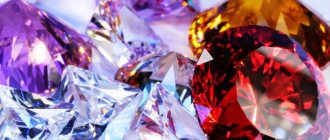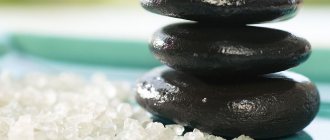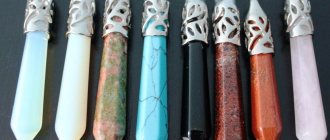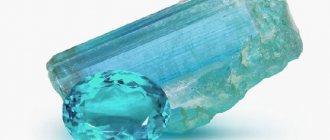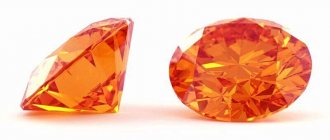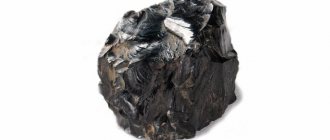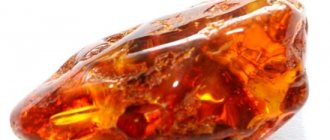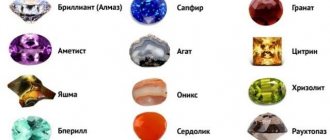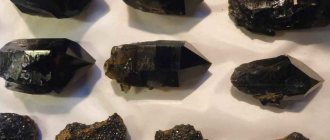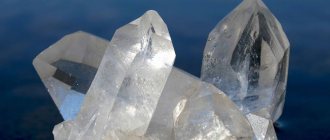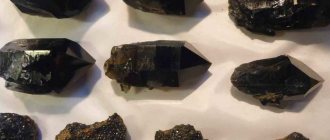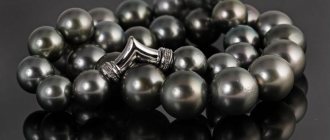What is a mineral?
A mineral appears in the process of changing its chemical and physical properties. For the most part, materials have a crystallized body, but it happens that they also include amorphous formations, that is, those that do not have a crystal lattice.
They are called mineraloids . Minerals also include solid hydrocarbon formations and some fossil resins that are included in amber. The science of minerals is studied by mineralogy.
It is also worth writing about which minerals are rock-forming. Among the entire variety of minerals, only a few participate in the formation of rocks.
The most important rock-forming minerals include:
- Quartz group or silica. The largest group in terms of its number in the Earth's crust. Quartz crystals are hexagon shaped. By itself, it is most often milky in color. Also, silica is not transparent. But it can boast of its hardness and strength.
- Aluminosilicates or alumina. The second most abundant mineral in the Earth's crust. They are characterized by high fire resistance and also not very high hardness.
- Iron-magnesium silicates. Such minerals are very dark in color. They are also very viscous and have a high specific gravity.
- Carbonates. The most valuable of the carbonates are magnesite and dolomite. They have low hardness and low specific gravity. They are most often found in sedimentary rocks.
- Sulfates. These include, for example, gypsum. They can also be found very often in sedimentary rocks. The specific gravity and hardness are also very low.
All minerals, depending on their origin, can be classified into primary and secondary:
- Primary minerals are those that were formed in rocks in the first place. As mentioned above, the first crystals were silicates; they were formed due to the solidification of magma.
- Secondary minerals were formed as a result of the destruction and disintegration of previous ones. You can find out about the origin of granite here.
The most famous jewelry and semi-precious stones and methods for determining their authenticity
The concepts of “jewelry and ornamental” and “decorative and ornamental” nuggets are usually distinguished. The first category includes samples used exclusively in the production of jewelry, the second includes minerals widely used in the construction industry and in the manufacture of figurines, souvenirs, and accessories. The rare and most beautiful of them are selected for insertion into jewelry.
The list of famous jewelry and ornamental specimens includes: chrysoprase, cat's eye (chrysoberyl), agate, heliotrope, jasper, aventurine, and the ornamental mineral tiger's eye. The stones are affordable, but this does not prevent craftsmen from releasing glass fakes to the market.
In order not to come across an imitation, when choosing, it is important to consider the following nuances:
- Natural stones are not cheap. For example, they learned to counterfeit turquoise a long time ago. Stones that are not sold in jewelry stores and are sold in large quantities are 100% fake. To create the effect of antiquity, insects are immured in golden glass imitating amber and sold at affordable prices. Authentic samples of natural resin are very rare and valuable today.
- Gems have low thermal conductivity. They are cold to the touch and remain that way for a long time, even when held in the palm of your hand. Counterfeits quickly heat up in your hand; they may be warm initially if it’s hot outside.
- When tapped, gems produce a characteristic sound that is not characteristic of glass fakes. You can compare the purchased option with another semi-precious stone. Or use a sample - pebbles. It is easy to identify a fake by the sound it makes when tapping.
- The hardness of a stone will tell you a lot about its authenticity. There are many cases where selenite (Mohs hardness 1.5-2) is passed off as a more expensive moonstone (hardness 6). There is no need to scratch or examine the stone yourself with a knife. You should ask the seller to test the product himself. For this he always has pencils and testers.
Classifying semi-precious stones is not easy. To classify them as a certain type, many criteria should be taken into account. A more reliable method of assessment is subjective. In any case, each product takes its place in the hierarchy and is valued for its unique properties.
How are minerals formed?
All processes of mineral formation known to scientists can be divided into three large groups:
- Hypogenic processes. A group of minerals that belong to silicates are formed due to the solidification of volcanic magma. Such crystallization occurs in three stages: At the very beginning , magma, which does not manage to escape to the surface of the earth, begins to solidify under the thickness of rocks that were already formed. Thus, minerals are formed that contain silica, that is, silicates. Such rocks usually contain granites, micas, spars and others.
- At the next stage of crystallization, the remains of magma are again introduced into the cracks of already formed minerals, but at a lower temperature. Thus, pegmatites appear. They are characterized by a very large crystal size. Thus, quartz, beryl, tourmaline and other rocks are formed. Pegmatites can also form due to the penetration of volatile compounds and valuable metals into cracks of crystallized minerals. Thus, by changing the composition of the resulting minerals, they create greisen. They consist of topaz, quartz, tungsten, molybdenum and other rare ores.
- The final stage of hypogene processes is the formation of hydrothermal solutions due to the release of water. Thus, deposits of silver, gold, arsenic, mercury and others are formed. We present to your attention an article about hydrothermal emerald, here.
- Regional. They occur at great depths and affect very large surfaces. During regional metamorphism, gneisses and slices are formed.
Jewelry and semi-precious stones: variety and value
The value of natural jewelry and semi-precious stones is in their huge variety. Gems of the same name vary greatly in transparency, crystal size, and shade.
Absolutely transparent crystals are cut like especially precious stones. Large crystals (up to 10 carats and above), emerald or wedge-shaped cut are used to make exclusive jewelry. They are decorated in gold and platinum.
The collections of Gucci, Nina Ricci, and other world-famous brands feature expensive products with aquamarines set in precious metals.
The ornamental stone charoite is an example of a rare mineral. It was discovered in the middle of the last century and is mined in a single deposit near the Chara River, in Russia. Its intense purple color and low production volumes have made it one of the most valuable gemstones.
How are minerals different from other substances?
The main distinguishing feature of minerals from other substances is the presence of a homogeneous internal structure. Thus, liquid and gaseous substances cannot be considered a mineral. As well as mixtures that have a heterogeneous structure. Also, artificially created rocks are not minerals.
The simplest mineral can be considered ordinary table salt . Its crystals are formed by very fine lattices, which contain chemical elements such as sodium and chlorine, which are interconnected by strong ionic bonds.
It is noteworthy that an atomic compound of oxygen and hydrogen, which has a homogeneous structure; in other words, ice is considered to be a mineral. But the liquid aggregate state of the same chemical elements of minerals is no longer.
Physical properties of minerals
In order to identify a mineral, the people responsible study its material composition and crystal lattice structure, that is, its physical properties.
So, the physical properties of minerals:
- Mineral color. In some cases, the color of a mineral can be determined by a spectral method by studying its light emission. Some minerals have the ability to change color depending on the light falling on them. Also, individual specimens have different colors along their entire length. The color of the line is the most accurate diagnostic feature. To determine the color of a mineral, the color of its powder is usually determined. To do this, the subject is scratched on a matte porcelain surface.
- Transparency. Based on this criterion, minerals are divided into several small groups: transparent (objects are clearly visible), translucent (objects are seen rather poorly), translucent (transmits only when the mineral is in the form of a thin plate), opaque (the mineral does not transmit light at all).
- Shine. Luster is the ability of an object to reflect light. When diagnosing minerals by their luster, they are divided into two groups: minerals with a metallic luster and those with a semi-metallic luster (diamond, glass, gloss, and others).
- Cleavage. So, they call the ability of a mineral to split into separate particles. Here, too, different types of cleavage are distinguished: very perfect (the mineral splits into individual particles without effort), perfect (with a light impact it crumbles into pieces, forming smooth surfaces), average (when scattered, fractures form), imperfect (cleavages in the mineral are difficult to detect) and very imperfect (no cleavage).
- Kink. The nature of the fracture is diagnosed by dividing minerals into several groups: smooth fracture, stepped fracture, uneven fracture, granular fracture, earthy fracture, conchoidal fracture, acicular fracture and hooked fracture.
- Hardness. This is the ability of a surface to resist the penetration of another substance. Determined by scratching the mineral with a fingernail, knife, glass or other mineral. Measured on the Mohs scale.
- Specific gravity. The following classes are distinguished: light (specific gravity up to 2.5 grams per cubic centimeter), medium (from 2.6 to 4 grams per cubic centimeter) and minerals with a high specific gravity (more than 4 grams per cubic centimeter).
- Magneticity. The property of minerals to deflect the magnetic needle of a compass and be attracted by a magnet.
- Fragility and malleability. Malleable minerals are those that can change shape when struck with a hammer. Fragile ones crumble when hit.
- Electrical conductivity. This is the ability of a substance, in this case a mineral, to conduct an electric current under the influence of an electric field.
- Smell. When burning, rubbing, or wetting, various minerals acquire a wide variety of odors. For example, carbon monoxide or hydrogen sulfide.
- Taste. Taste effects are present only in water-soluble minerals.
- Fat content and roughness.
- Hygroscopicity. The ability of a mineral to attract water molecules.
In what form are minerals found in nature?
In nature, minerals can be found in various forms. Thus, some specimens may be in the form of single crystals. Others are clusters - aggregates.
There are three types of mineral aggregates:
- Isometric units. Their form is equally developed in all directions.
- Elongated in one direction - needle-shaped, columnar, radiant and prismatic.
- Shapes elongated in two directions. These include lamellar, tabular, scaly and leafy crystals.
Taxonomy of minerals
For a more accurate classification of minerals, the International Mineralogical Association has approved the following taxonomy:
- Class. First of all, minerals are classified according to their anions. There are three groups: basic anion, anionic complex and no anion. Thus, all minerals are divided into: nuggets, organic compounds, sulfides, oxides and hydroxides, carbonates, nitrates, sulfates and others.
- Subclass. Subclasses distinguish minerals with different structures. Thus, MMA divided all minerals into non-co-, cyclo-, coro-, ino-, phylo- and tectosilicates.
- Family. Minerals are divided into families depending on the similarity of their chemical or structural composition.
- Supergroup. It contains those minerals that are not included in separate groups.
- Group. Unites minerals with the same structures and chemical composition.
- Subgroup.
How are minerals used?
All the minerals of the planet have found wide application in a wide variety of industries:
- The first place is undoubtedly occupied by industry. For example, processing alumina can produce large quantities of cement. Mica is a good thermal and electrical insulator, kyanite is widely used as a fireproof material, and quartz is used to make glass.
- Minerals are also widely used as precious and semi-precious stones for decorating jewelry. Those minerals that are not of high value are widely used for repairs, construction and even decoration.
- Gypsum, apatite and saltpeter are no less often used , but as fertilizers. Cryolite, fluorite, kyanite and other minerals are used to make porcelain figurines and dishes.
- Separately, it is worth mentioning about tungsten. It is used for the production of refractory steel grades. And also for the manufacture of incandescent lamps.
- Surely, everyone knows lead bullets , which are also made from mineral. Lead was also widely used for protection against radioactive radiation.
- The mineral was not spared by artists either. They use it as a dye for their paints. For example, aquamarine produces blue, while emerald green produces green. Cinnabar colors bright red colors and so on.
- Surely, there is not a single person who has never taken at least a sip of mineral water in his life . It got its name for a reason. It gets its useful components: salts, alkalis and others from minerals. Water at depth interacts with them and becomes enriched with alkalis.
Characteristics of ornamental materials
Precious and ornamental stones have always attracted human attention. Interest in natural materials was caused by the need to create living conditions. Special stones satisfied aesthetic needs, and their processing became a craft.
Many precious and semi-precious stones have valuable technical parameters and are used in various branches of industrial production.
The definition of ornamental mineral raw materials is collective and includes all rocks and minerals that are used as a material for inserts into jewelry and the manufacture of individual products.
Very often, less valuable opaque rocks , but with bright colors and intricate patterns, are included in the group of ornamental raw materials. They are used to make household items (ashtrays, boxes).
We also recommend reading:
The history and curse of the Kohinoor stone The marvelous ametrine stone Characteristics of larimar and its main properties Selection of stones by date of birth
Large monoliths of ornamental mineral material, often used as finishing or cladding materials for cathedrals, monuments, and architectural structures, are composed mainly of opaque minerals.
Valuable ornamental stone is distinguished by its hardness and stable color.
They are resistant to atmospheric conditions and have a variety of textural features, variegated colors and textures.
This valuable ornamental stone is distinguished by its hardness and stable color. Color is determined by the chemical composition of mineral components and internal structure. The play or shimmer of natural material is ensured by the fine structure of the mineral composition of the rock, causing interference or scattering of light.
Jewelry and ornamental stones are resistant to mechanical stress. The high hardness of rock mineral formations protects the product from scratches.
Mirror polishing of mineral inserts in jewelry is achieved by processing the raw material with a variety of materials. In order to polish small diamonds to a brilliant state, it is necessary to use the same diamond powder intended for softer minerals.
What stones are minerals?
Some people mistakenly believe that all stones can be classified as minerals. This is, for example, what they call hydrothermal stones, which is completely wrong. Only natural stones can be considered minerals. For example, tar, azurite, tanzanite.
You can count more than one thousand beautiful mineral stones, but not all will be considered semi-precious, much less precious. The latter are considered stones of extraordinary beauty, but they are extremely rare, which fully justifies their high cost.
Precious stones that belong to minerals can be considered, for example, labuntsovite - a silicate with a complex composition. Or osumilite, a very rare mineral. Churchite is a rare gypsum mineral. Chrysoberyl is an oxide of beryllium and aluminum. And of course, diamond, ruby, emerald and others.
Semi-precious stones are, of course, not so rare, so their prices are lower. But still you can not meet them very often. Amethyst, one of the semi-precious stones, is also considered a mineral. These also include, for example, turquoise, aquamarine, topaz and amber.
Mineralogy is a very interesting science, as is the process of the formation of minerals and their study. Minerals play a significant role in the lives of people and the entire Earth. Therefore, you should not devalue them. This is the same wealth of the planet as everything else.
Refinement of stones
A semi-precious stone is sometimes subjected to additional processing to change color. For these purposes, various chemical dyes (red, blue agates) are used.
Some semi-precious rocks are artificially processed before cutting by heating or exposure to ultraviolet or x-rays to change them in the desired direction. For example, when irradiated with radium, a colorless diamond becomes green.
A special type of decorative stones, created synthetically, is used as imitation of valuable mineral formations.
Artificial coloring of synthetic corundum and spinel by introducing impurities of titanium, vanadium, iron, chromium makes it possible to form amethyst, aquamarine, and alexandrite on their basis.
Imitation of precious minerals differs from natural analogues. Rhinestones, glass, slag and plastic are used to make dummies.
Valuable ornamental stone obtained by refining a natural material is not resistant to the soldering tools used by craftsmen.
Valuable ornamental stone of the beryl group is oiled. This method was used in ancient times and is now used for all emeralds. For these purposes, cedar oil is used, which is used to saturate the mineral. Through the pores, the oil seeps into the mineral, making it visually clean.
Using the deep diffusion method at the ion level, the valuable ornamental stone is fired in a kiln together with beryllium. The presence of this chemical element gives the mineral a bright pink and rich yellow color. This method is used to speed up the processing of sapphires in order to extract minor compounds from the minerals.
